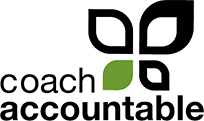Showcase Your Results with Embedded Metrics
Metrics are great for documenting progress and telling the story behind the numbers. By the same token they are a great way to showcase the results that your coaching produces for your clients. After all, nothing demonstrates progress and results quite like real numbers.
CoachAccountable now allows you to embed an interactive metric graph with just a snippet of HTML. Here’s what one looks like:
[iframe src=”https://www.coachaccountable.com/specialActions?a=EM&x=NZSGjfqAKJcFI2EA3iRw6koLpyLKWc” style=”border: none; padding: 0;” width=”100%” height=”300″]Mouse over the graph to see annotations and specifics relating to the target: it’s a dense presentation of information that really captures the progression of results over time.
Getting the snippet of HTML for embedding a metric is simple: just click to edit a metric, and grab the embed code from the bottom of the editor window. Paste it onto your website or in your blog, and you’re showing off results to the world.

Just copy and paste, hit up your web guy for help if you need it.
Want to impress would-be clients? Showcase the results you’ve produced with one of your clients at this level of detail, and your prospective customer will have a really clear sense of what they could gain by working with you. Makes a great centerpiece for a case study, or even a blog post.









